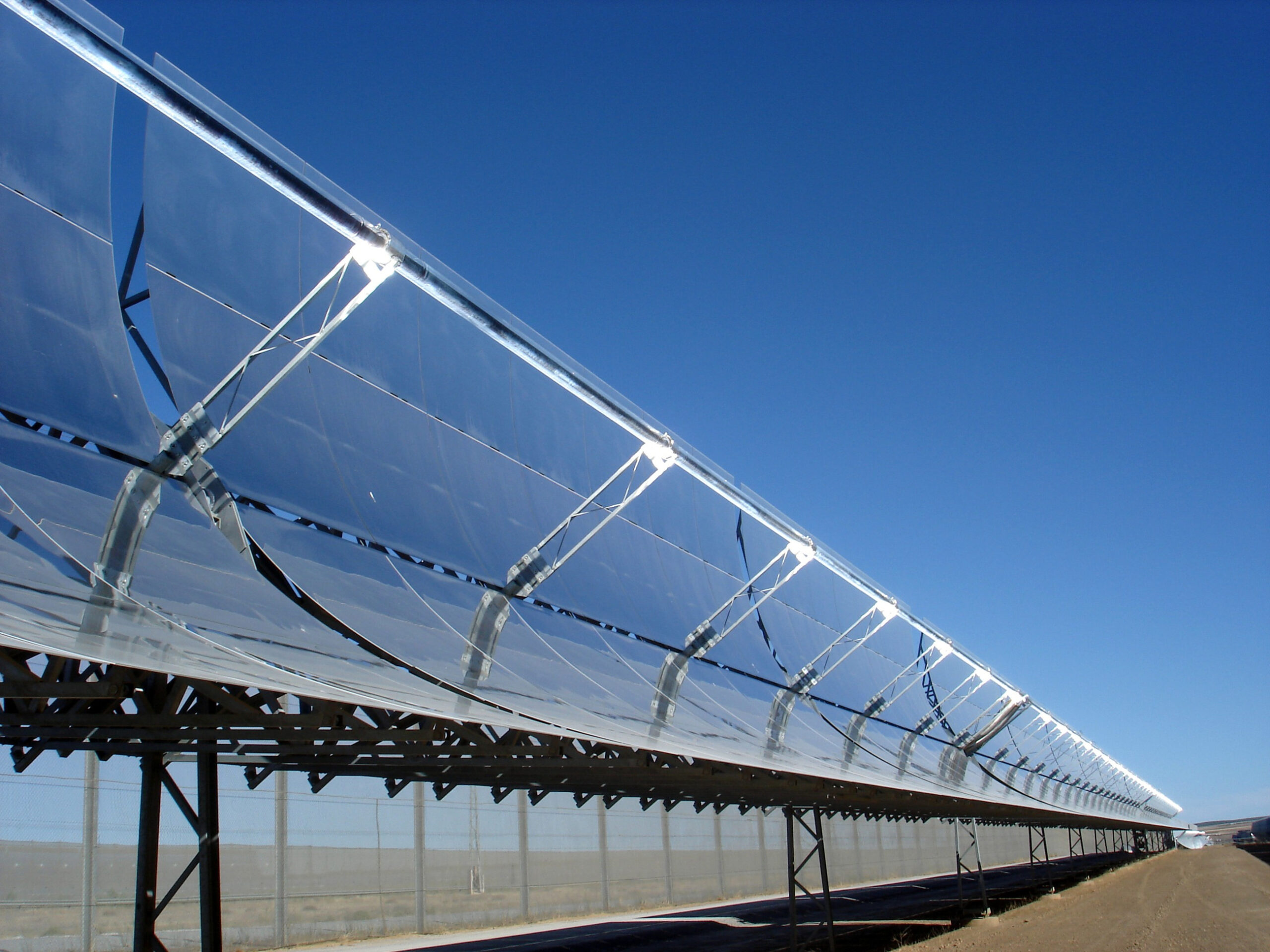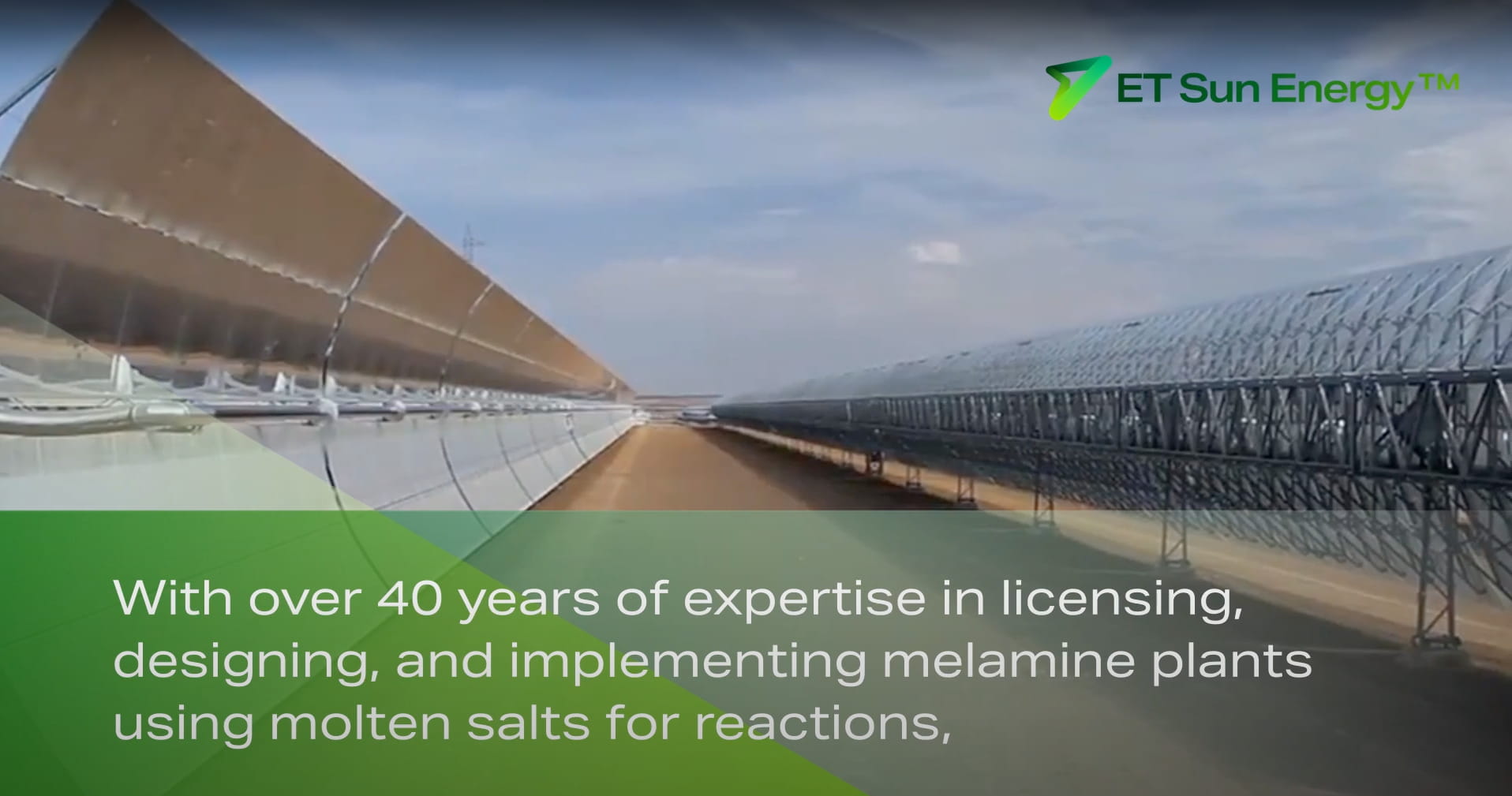
ET Sun Energy™ Technology
1010 MWh
Unit at solar power station in Spain
50%
of global energy use comes from thermal energy
Eurotecnica pioneered its ET Sun Energy™ technology in the late 2000s, successfully implementing it to address this opportunity. While the concept is straightforward, the engineering challenges involved in designing safe, high-performance, and reliable plants were substantial.
The ET Sun Energy™ system is designed to store surplus heat generated by the solar field during the day (charge mode) and release it at night (discharge mode) when the solar field is inactive. This is achieved using a large inventory of molten salts contained in two storage tanks, which operate alternately between charge and discharge modes.
In discharge mode, the heat from the molten salts flows through a boiler, providing the energy required to drive a steam turbine and, ultimately, the electric generator. This innovative approach ensures continuous electricity generation, maximising the efficiency and profitability of solar energy systems.
A small fraction of the desert area in North Africa or the Middle East could produce an amount of electricity equivalent to the total consumption of the European Union. To fully capitalise on this vast, cost-free energy source collected through a specially designed solar field, the integration of a thermal energy storage system (TES) is essential.
Videos

Market
Thermal Energy Storage (TES) systems are pivotal in enhancing energy efficiency and facilitating the integration of renewable energy sources into power grids. By storing surplus thermal energy for later use, TES ensures a consistent energy supply, bridging the gap between energy generation and consumption.
The global TES market has experienced significant growth in recent years, driven by a shift towards renewable energy generation and increased demand for energy-efficient solutions.
Applications
Thermal Energy Storage (TES) is a key technology for enhancing energy efficiency and enabling the integration of renewable energy sources. In power generation, TES systems store surplus thermal energy from sources such as solar power, releasing it during peak demand or when production is low. This ensures a consistent and reliable energy supply, improving grid stability and resource efficiency. A prime example is Eurotecnica’s ET Sun Energy™ Technology, successfully implemented at the Andasol 3 Solar Power Station in Spain. The system stores solar energy during the day and releases it at night, enabling continuous power generation even when the solar field is inactive.
TES is also widely used in district heating and cooling systems, where surplus energy is stored and distributed as needed, reducing waste and supporting urban decarbonisation. In industrial processes, TES helps manage thermal loads by storing heat for later use, improving efficiency and lowering energy costs in sectors such as chemical production, food processing, and metalworking. Additionally, TES systems are increasingly employed in commercial and residential buildings to store thermal energy for heating, cooling, and hot water, cutting operational costs and reducing dependence on traditional energy sources.
By enabling efficient energy storage and flexible utilisation, TES is revolutionising energy systems, making them more reliable, sustainable, and cost-effective. The Andasol 3 project exemplifies how TES can optimise renewable energy use and ensure continuous availability.